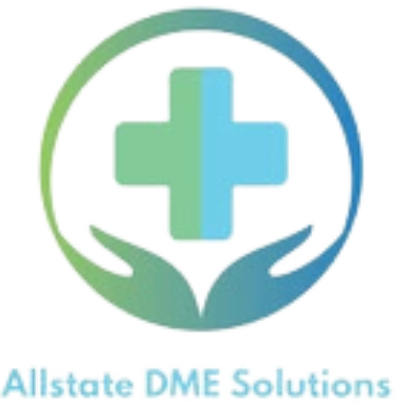
In the dynamic realm of healthcare, venturing into selling medical equipment requires meticulous planning and strategic execution. This comprehensive guide navigates you through the intricate process of starting your own venture, providing insights and practical tips to ensure a successful business journey.
Understanding the Market
To embark on a successful medical equipment business, it’s crucial to understand the market landscape. Stay abreast of current trends, emerging demands, and evolving consumer preferences. Tailor your offerings to meet these needs, positioning your business as a reliable source for cutting-edge medical solutions.
Researching Regulations
Navigating the regulatory landscape is paramount in the medical equipment industry. Ensure compliance with local and international standards, obtaining necessary certifications to guarantee the quality and safety of your products. This builds trust with both customers and regulatory bodies.
Identifying Niche Opportunities
Dive into specialized markets by identifying niche opportunities. Whether it’s focusing on a specific medical field or offering unique product features, carving a niche can set your business apart. Conduct thorough market research to pinpoint areas with untapped potential.
Building Industry Knowledge
Staying informed on the latest medical advancements is crucial. Build industry knowledge by attending conferences, engaging with healthcare professionals, and subscribing to reputable publications. This ensures your offerings align with the latest advancements, giving your business a competitive edge.
Creating a Business Plan
A robust business plan is the backbone of your venture. Outline your business goals, target market, financial projections, and marketing strategies. A well-thought-out plan serves as a roadmap, guiding your business toward success.
Securing Funding
Explore various financing options to secure the necessary capital for your startup. Whether through loans, investors, or grants, having adequate funding is essential for purchasing inventory, setting up operations, and sustaining your business during its initial stages.
Selecting Suppliers
Establishing reliable partnerships with reputable suppliers is key. Ensure your suppliers adhere to quality standards and can meet your demand consistently. Building strong relationships with suppliers ensures a steady and dependable source of inventory.
Establishing an Online Presence
In the digital age, a professional online presence is non-negotiable. Develop a user-friendly website that showcases your products, provides relevant information, and facilitates easy transactions. An online presence enhances your visibility and credibility in the market.
Implementing Marketing Strategies
Crafting effective marketing strategies is essential for reaching potential customers. Utilize digital marketing tools, social media platforms, and industry-specific channels to promote your products. Tailor your marketing approach to resonate with your target audience.
Developing a Sales Strategy
A well-defined sales strategy is crucial for converting leads into customers. Train your sales team to effectively communicate the value of your products, address customer needs, and close deals. A strategic sales approach enhances customer acquisition and retention.
Offering Excellent Customer Service
Exceptional customer service is a cornerstone of success. Prioritize customer satisfaction by providing timely support, addressing concerns, and offering product education. Happy customers become loyal advocates, contributing to your business’s long-term success.
Ensuring Regulatory Compliance
Adhering to regulatory standards ensures the safety and reliability of your products. Regularly audit your processes, conduct quality checks, and promptly address any compliance issues. A commitment to regulatory compliance builds trust and credibility.
Handling Inventory
Efficient inventory management is vital. Implement systems to track stock levels, reorder supplies in a timely manner, and minimize the risk of stockouts. Well-managed inventory ensures you can meet customer demands promptly.
Setting Competitive Prices
Balancing affordability and profitability is an art. Conduct thorough market research to determine competitive pricing while ensuring your business remains financially viable. Offering value for money strengthens your position in the market.
Building Relationships with Healthcare Professionals
Networking with healthcare professionals opens doors to valuable partnerships. Attend industry events, engage with professionals, and build relationships based on trust and mutual benefit. Collaborations with healthcare professionals can significantly boost your business.
Providing Training and Support
Ensure your customers are proficient in using your products by offering training and support. This not only enhances customer satisfaction but also reduces the likelihood of product misuse or dissatisfaction.
Expanding Product Range
Strategically expand your product range based on market trends and customer demands. Introduce complementary products or innovative solutions to diversify your offerings. A diverse product range attracts a broader customer base.
Monitoring Industry Changes
The healthcare industry is dynamic, with constant changes and advancements. Stay vigilant by monitoring industry trends, technological innovations, and shifts in consumer behavior. Adapt your business strategies accordingly to stay ahead of the curve.
Handling Legal and Liability Issues
Mitigate risks responsibly by addressing legal and liability concerns. Consult legal experts to ensure your business is compliant with all relevant laws. A proactive approach to legal matters safeguards your business’s reputation and longevity.
Leveraging Technology
Utilize software and technology to streamline your operations. From inventory management to customer relationship management (CRM), technology enhances efficiency and productivity. Embrace innovations that align with your business needs.
Tracking and Analyzing Data
Make informed business decisions by tracking and analyzing data. Utilize analytics tools to understand customer behavior, sales trends, and market dynamics. Data-driven insights empower you to adapt and optimize your business strategies.
Obtaining Certifications
Enhance your business’s credibility by obtaining relevant certifications. Certifications validate the quality and safety of your products, instilling confidence in customers and partners. Showcase certifications prominently to build trust.
How to Start Selling Medical Equipment
Embarking on the journey to start selling medical equipment requires a holistic approach. From understanding the market to ensuring regulatory compliance and building lasting customer relationships, this guide provides the roadmap to a successful venture.
Frequently Asked Questions (FAQs)
Q: How do I choose the right niche for selling medical equipment?
Identify unmet needs or underserved markets in the healthcare industry. Conduct thorough research, analyze trends, and consider your expertise to determine a niche that aligns with your business goals.
Q: What financing options are available for starting a medical equipment business?
Explore options such as business loans, investors, grants, or crowdfunding. Choose the option that best suits your financial needs and aligns with your long-term business strategy.
Q: How can I ensure regulatory compliance for my medical equipment?
Stay informed about local and international regulations. Consult with regulatory experts, conduct regular audits, and implement robust quality control processes to ensure compliance.
Q: What role does technology play in selling medical equipment?
Technology enhances efficiency in inventory management, sales, and customer support. Embrace software solutions that align with your business needs to streamline operations.
Q: How do I build strong relationships with healthcare professionals?
Attend industry events, engage in networking opportunities, and provide value to healthcare professionals. Building relationships based on trust and mutual benefit is key to successful partnerships.
Q: What are the key considerations for setting competitive prices?
Conduct market research to understand pricing trends. Balance affordability with profitability, considering your costs and providing value for money to customers.
Conclusion
Embarking on the journey of selling medical equipment demands a strategic and informed approach. By understanding the market, navigating regulations, and prioritizing customer satisfaction, you can build a successful and sustainable business. Stay agile, adapt to industry changes, and always prioritize the well-being of your customers.




